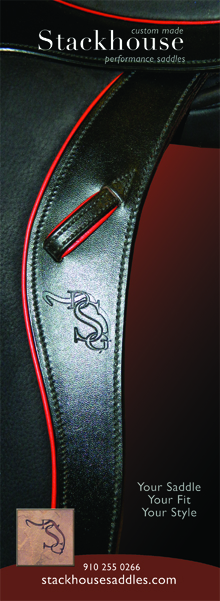Search the Site
Guest Blog Post # 42: "I'm Melting!" by the great Bill Woods!
It's 20 years ago. I "sort of " know how to ride. (At that point I'd already been doing it for almost 30 years and ridden I-1.) I'm having a lesson with Maj. Lindgren. The horse—a lower level one—is on a 20 meter circle. The horse is going forward. His outline is round. The circle is accurate. But Lindgren keeps shouting, "He is not through. Push him through!" Not much changes because, honestly, I don't really understand what he means.
So now, years later, the worm has turned. It's my time to explain the inexplicable—to put physical sensation and mental connections into terms not so generic or esoteric that I'm doing nothing more than talking to myself.
The ultimate teacher is always the horse, but how to arrange the situation with him that I can point to it and tell my rider "That's it. That's what you want to make him feel like."?
We can round up all the usual right-brainy clichés—the “pliable,” “rubbery,” “buttery,” “moldable” ones. There are dozens more, and while they make sense as they are uttered, to uncomprehending ears they are just more blah, blah. In truth, the reason it took me so long to “get it” was that no one went out on a limb and really told me what I needed to do. As a teacher, the words are tricky—the proverbial slippery slope—and can be easily misconstrued. Get quoted out of context on-line or in a magazine and you, Mr. or Ms. Instructor, may be queuing up for a different line of work!
Seems to me, though, that if you pick your audience carefully (which excludes gaggles of Pony Club D-2s) and you don’t mind living a little closer to the edge, you can risk using caveated descriptions that get to the heart of things.
Pre-conditions: the rider has to have an independent seat; she can’t be fearful; and she has to have a brain in her head. And then I can say to her (in some version or another), “I may withdraw these comments later. I may strenuously moderate them. But for now, just figure out what I’m telling you, and do it.”
And what I tell her is: To “come through” is for the horse to believe that his best interests are served by adhering to your wishes. We do no harm. We do not coerce with pain. But we DO create situations where the horse in softening and yielding self- rewards and also is rewarded by us with a cessation of the demand—a lessening of the physical pressure upon him—and he recognizes that as pleasant. As the rider/trainer you can’t be like the kid in the back row who knows the answer but never gets called on to give it. You have to step up to the plate and be heard!
A good synonym for thoroughness is permeability—like from biology class when you learned about permeable membranes. Or like a coffee filter which is permeable to let the liquid through but not the grounds. Horses which are rigid or indifferent (Don’t cringe—take this with a grain of salt) need to be met with a demandingly pushing leg and a suppling, modifying, receiving hand. I have called to mind the butcher’s meat grinder (I knew you’d cringe!). Watch him crank the chuck steak through it. A plate on the output end with big holes, and you end up with coarse, lumpy burger. An end plate with small holes and the meat coming out is nicely parsed into delicate, tiny morsels.
Okay, it’s disgusting, isn’t it? Nobody wants to think of making hamburger of their horse, especially in this politically sensitive post-PETA world. But it’s just an analogy to bring a rider to the realization of how different the horse must feel when he does come through. No, he is NOT forced through an iron sieve. Yes, it is done with persuasion and with the delicate give-and-take of intermittent pressure and the offer of reward. But the rider HAS TO DO SOMETHING. That’s the point. The horse must not only understand what you want. He has to feel motivated to take you up on your offer. You can sit there all day and dangle your hook in the water, but if your horse isn’t interested, you’re going to come up empty, fish-wise. This is where leg meets hand, and even the barest hint of softening must be rewarded. The whole thing is a process. It isn’t like breaking a board with a sharp, sudden stroke that makes the horse “give.” It’s much more like an ice cube that turns to water in your closed fist or the slice of cheese that melts over a burger in the frying pan.
So now, years later, the worm has turned. It's my time to explain the inexplicable—to put physical sensation and mental connections into terms not so generic or esoteric that I'm doing nothing more than talking to myself.
The ultimate teacher is always the horse, but how to arrange the situation with him that I can point to it and tell my rider "That's it. That's what you want to make him feel like."?
We can round up all the usual right-brainy clichés—the “pliable,” “rubbery,” “buttery,” “moldable” ones. There are dozens more, and while they make sense as they are uttered, to uncomprehending ears they are just more blah, blah. In truth, the reason it took me so long to “get it” was that no one went out on a limb and really told me what I needed to do. As a teacher, the words are tricky—the proverbial slippery slope—and can be easily misconstrued. Get quoted out of context on-line or in a magazine and you, Mr. or Ms. Instructor, may be queuing up for a different line of work!
Seems to me, though, that if you pick your audience carefully (which excludes gaggles of Pony Club D-2s) and you don’t mind living a little closer to the edge, you can risk using caveated descriptions that get to the heart of things.
Pre-conditions: the rider has to have an independent seat; she can’t be fearful; and she has to have a brain in her head. And then I can say to her (in some version or another), “I may withdraw these comments later. I may strenuously moderate them. But for now, just figure out what I’m telling you, and do it.”
And what I tell her is: To “come through” is for the horse to believe that his best interests are served by adhering to your wishes. We do no harm. We do not coerce with pain. But we DO create situations where the horse in softening and yielding self- rewards and also is rewarded by us with a cessation of the demand—a lessening of the physical pressure upon him—and he recognizes that as pleasant. As the rider/trainer you can’t be like the kid in the back row who knows the answer but never gets called on to give it. You have to step up to the plate and be heard!
A good synonym for thoroughness is permeability—like from biology class when you learned about permeable membranes. Or like a coffee filter which is permeable to let the liquid through but not the grounds. Horses which are rigid or indifferent (Don’t cringe—take this with a grain of salt) need to be met with a demandingly pushing leg and a suppling, modifying, receiving hand. I have called to mind the butcher’s meat grinder (I knew you’d cringe!). Watch him crank the chuck steak through it. A plate on the output end with big holes, and you end up with coarse, lumpy burger. An end plate with small holes and the meat coming out is nicely parsed into delicate, tiny morsels.
Okay, it’s disgusting, isn’t it? Nobody wants to think of making hamburger of their horse, especially in this politically sensitive post-PETA world. But it’s just an analogy to bring a rider to the realization of how different the horse must feel when he does come through. No, he is NOT forced through an iron sieve. Yes, it is done with persuasion and with the delicate give-and-take of intermittent pressure and the offer of reward. But the rider HAS TO DO SOMETHING. That’s the point. The horse must not only understand what you want. He has to feel motivated to take you up on your offer. You can sit there all day and dangle your hook in the water, but if your horse isn’t interested, you’re going to come up empty, fish-wise. This is where leg meets hand, and even the barest hint of softening must be rewarded. The whole thing is a process. It isn’t like breaking a board with a sharp, sudden stroke that makes the horse “give.” It’s much more like an ice cube that turns to water in your closed fist or the slice of cheese that melts over a burger in the frying pan.
Throughness is an immensely complicated feeling. Do it with intimidation and you haven’t done it at all. Try to do it without determination and you just don’t get anywhere. But when it happens the right way and you feel that soft, melted sensation in the contact—whether you can tell it yourself or your coach has to point it out to you— EVERYTHING will have changed.
And the gross analogy (for which I will be quick to apologize) will become a far more refined image in your mind—an image of agreeable compliance and cheerful understanding.
Trust me on this.
And the gross analogy (for which I will be quick to apologize) will become a far more refined image in your mind—an image of agreeable compliance and cheerful understanding.
Trust me on this.






